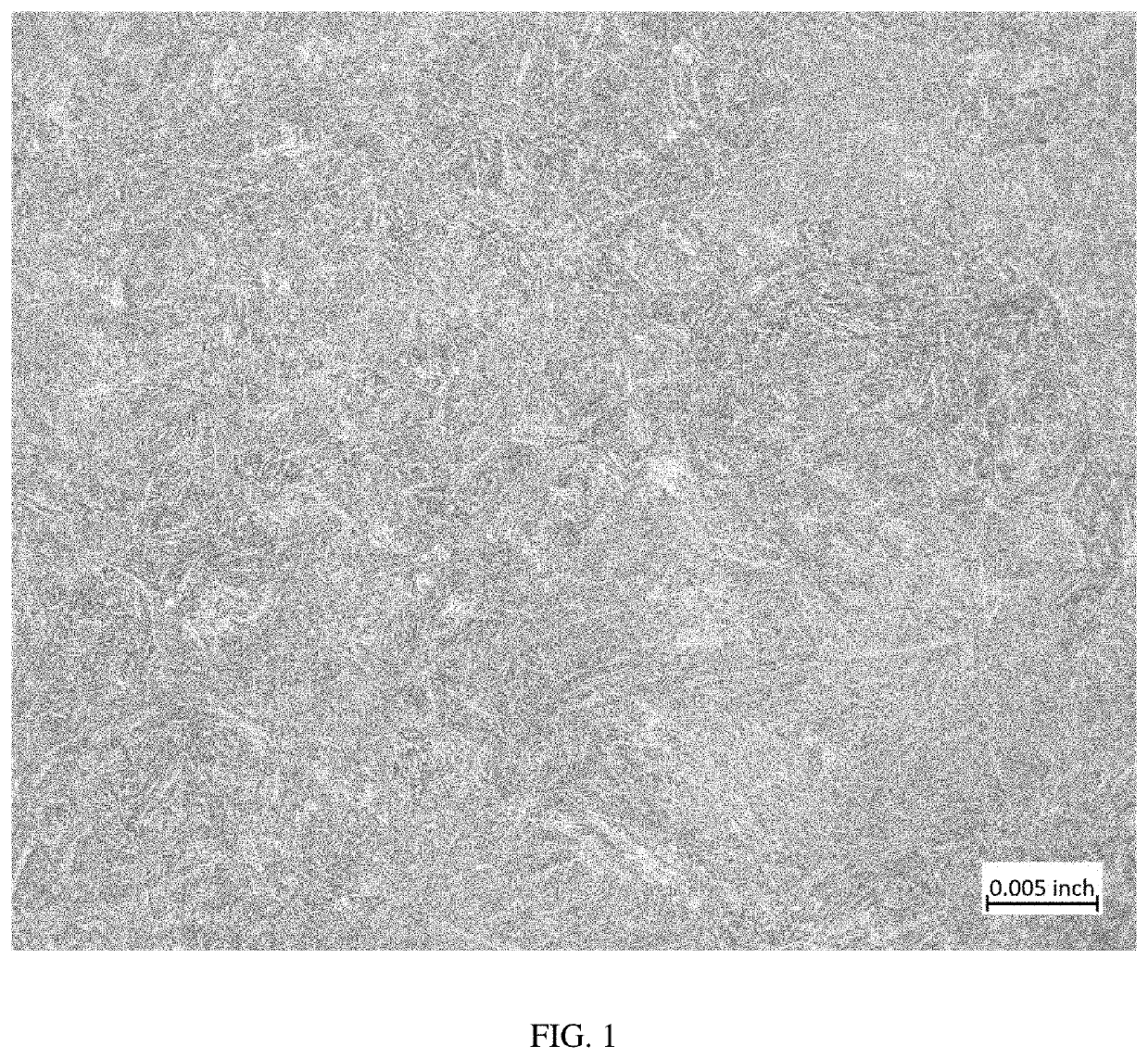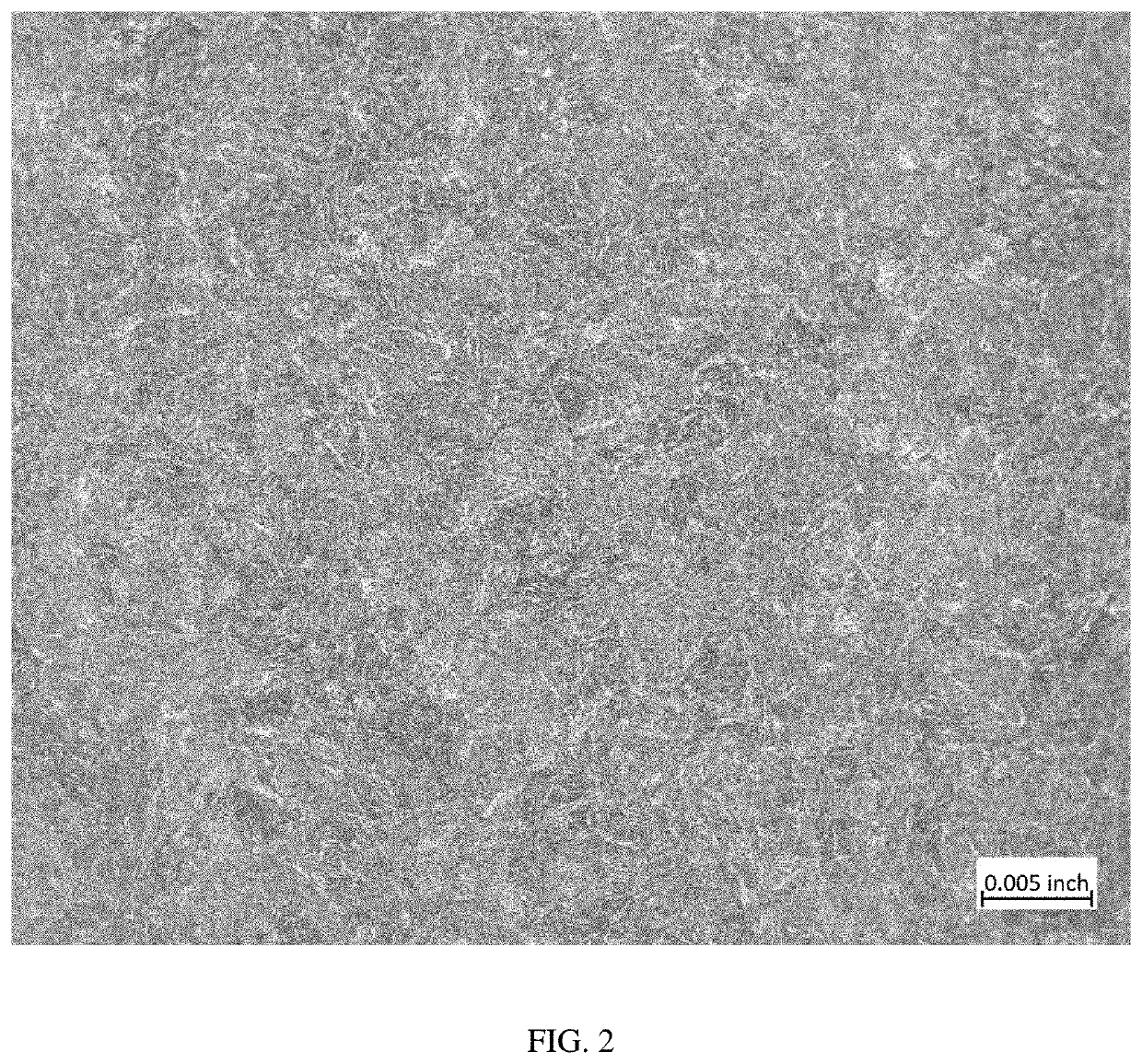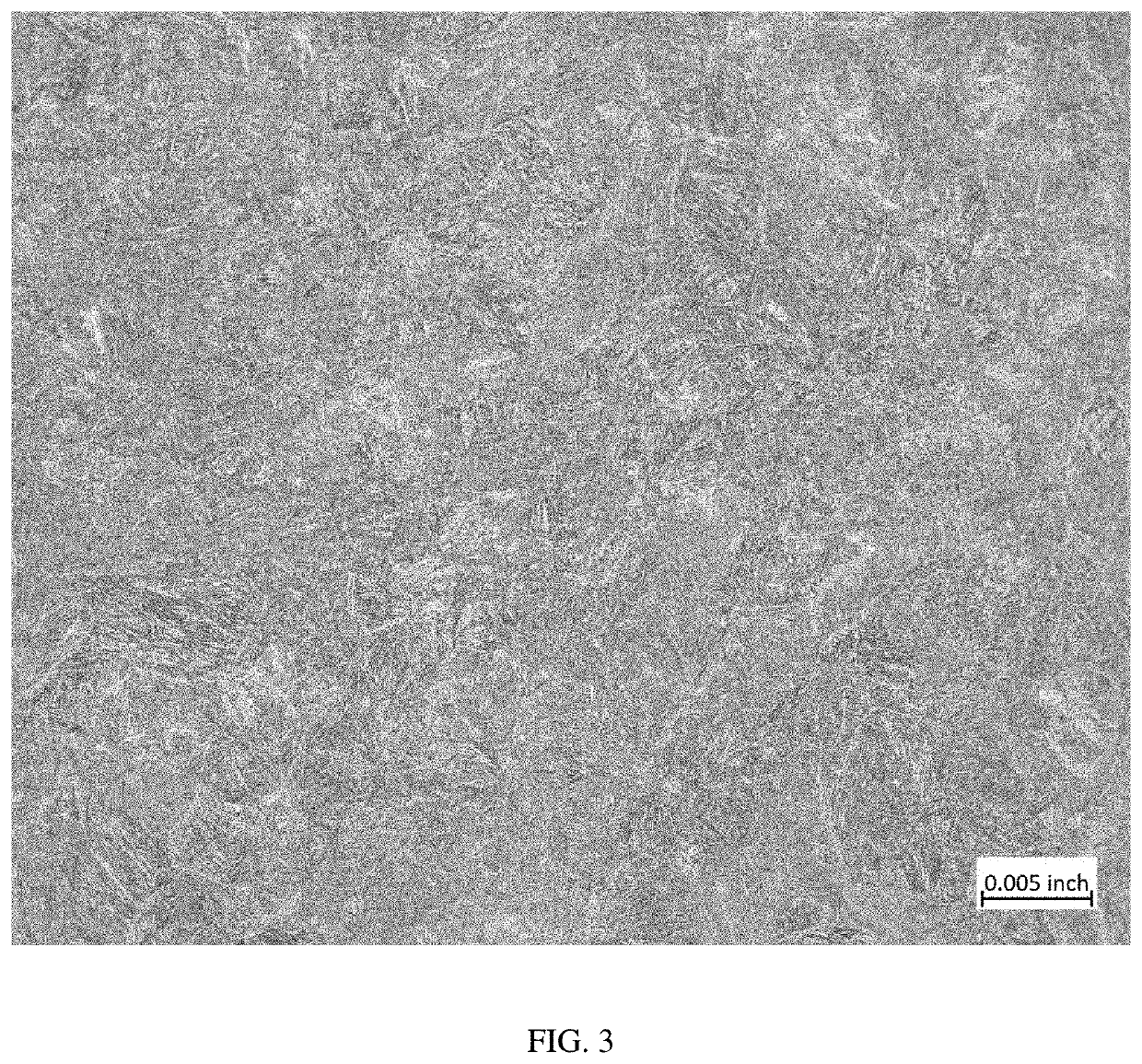Quench and Temper Corrosion Resistant Steel Alloy and Method for Producing the Alloy
- Summary
- Abstract
- Description
- Claims
- Application Information
AI Technical Summary
Benefits of technology
Problems solved by technology
Method used
Image
Examples
working examples
[0038]In order to demonstrate the novel combination of strength, ductility, toughness, and corrosion resistance provided by the alloy according to this invention, testing programs were carried out as described in the following examples.
example 1
gen
[0039]Three heats evaluated in this project were melted as 35-lb. laboratory heats. The weight percent compositions and heat numbers of these heats are shown in Table 1.
TABLE 1Elmt.780781782C0.220.240.27Mn0.500.500.50Si0.940.940.94PS0.00120.00050.0008Cr9.949.919.93Ni3.493.543.50Mo1.501.501.50Cu0.500.490.50Co2.492.502.49V0.490.500.49Ti0.040.070.04N0.110.100.11
The balance of each alloy was iron and usual impurities.
[0040]The heats were vacuum melted and cast into 4-in. square ingot molds. The ingots were air cooled, stress relieved at 1150° F. for 3 hours, and then cooled in air. The ingots were charged into a furnace running at 1200° F. The furnace temperature was ramped up to 1600° F. and held at that temperature until the ingots equalized in temperature. The furnace temperature was then ramped up to 2350° F. The ingots were heated at 2350° F. for 12 hours. The furnace temperature was then decreased to 2200° F. and held at that temperature for 1 hour to equalize the ingot tempera...
example 2
ogen
[0050]Large, mill-scale heats were produced to provide examples containing more than 0.15% nitrogen. The average weight percent compositions of the two heats are presented in Table 7 below.
TABLE 7Elmt.Ht. 573Ht. 928Ht. 487C0.230.270.23Mn0.560.550.57Si1.211.070.95P0.0030.0030.001S0.0020.0020.001Cr10.0710.0710.13Ni3.573.573.57Mo1.541.571.54Cu0.510.510.51Co2.562.522.56V0.250.250.25Ti0.0130.024Al0.0160.0140.024NbN0.210.240.21
The balance of each alloy was iron and usual impurities including less than 0.0015% oxygen.
[0051]The heats were vacuum induction melted and cast as 14-inch electrode ingots for remelting. The electrode ingots were refined by electroslag remelting under a superatmospheric pressure of nitrogen to form 17-inch diameter ingots. The PESR ingots were hot worked from a start temperature of 2200° F. to produce 4.75-inch round bars. The bars were heated at 1950° F. (1066° C.) for 4 hours, air cooled, and then annealed at 1150° F. (620° C.) for 8 hours and cooled in air.
[...
PUM
| Property | Measurement | Unit |
|---|---|---|
| Fraction | aaaaa | aaaaa |
| Fraction | aaaaa | aaaaa |
| Fraction | aaaaa | aaaaa |
Abstract
Description
Claims
Application Information
 Login to view more
Login to view more - R&D Engineer
- R&D Manager
- IP Professional
- Industry Leading Data Capabilities
- Powerful AI technology
- Patent DNA Extraction
Browse by: Latest US Patents, China's latest patents, Technical Efficacy Thesaurus, Application Domain, Technology Topic.
© 2024 PatSnap. All rights reserved.Legal|Privacy policy|Modern Slavery Act Transparency Statement|Sitemap



